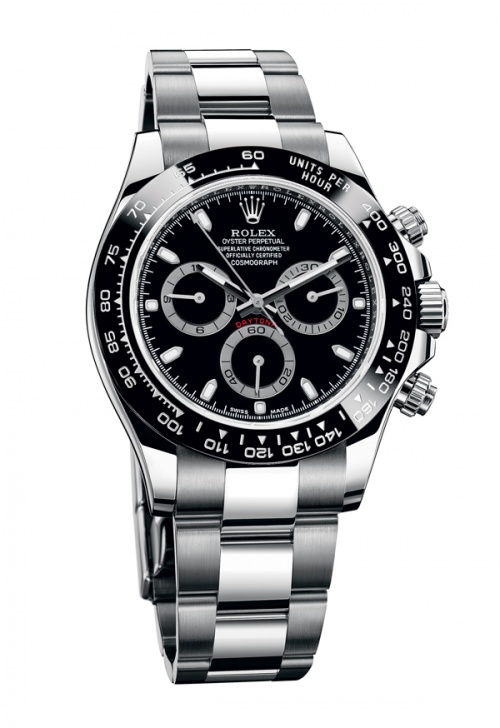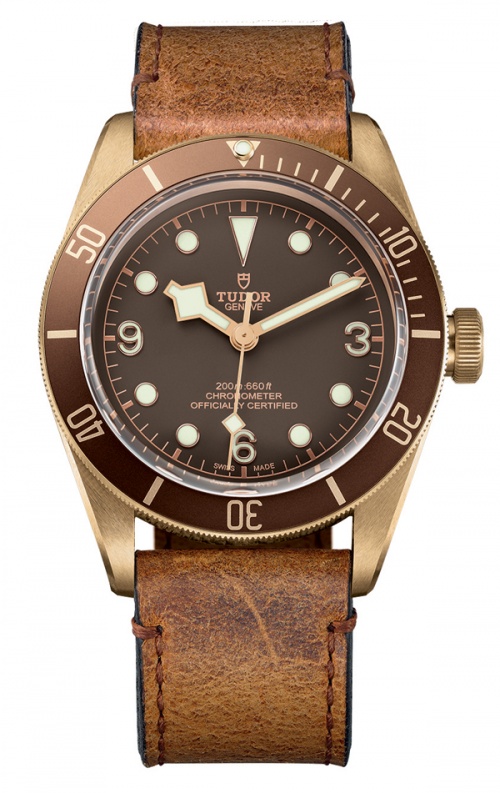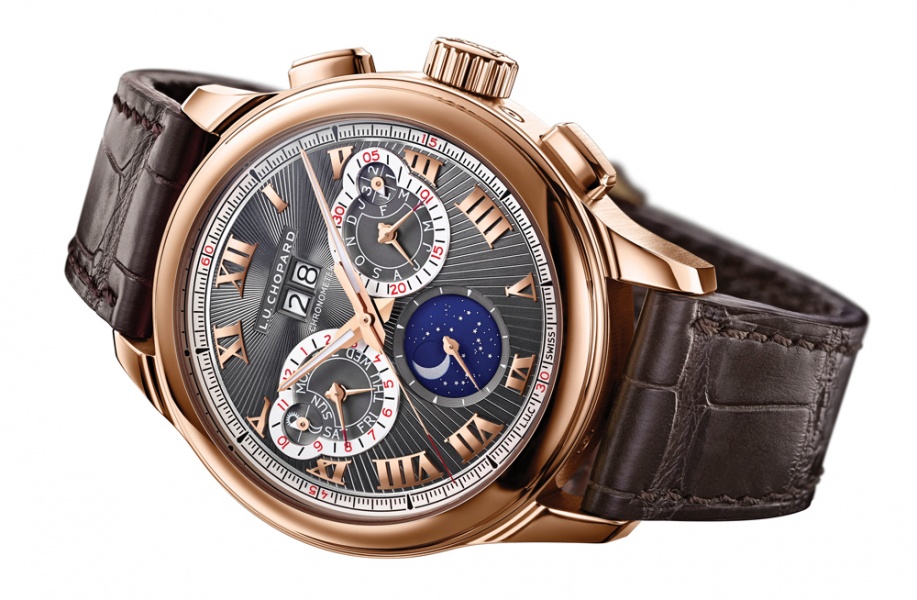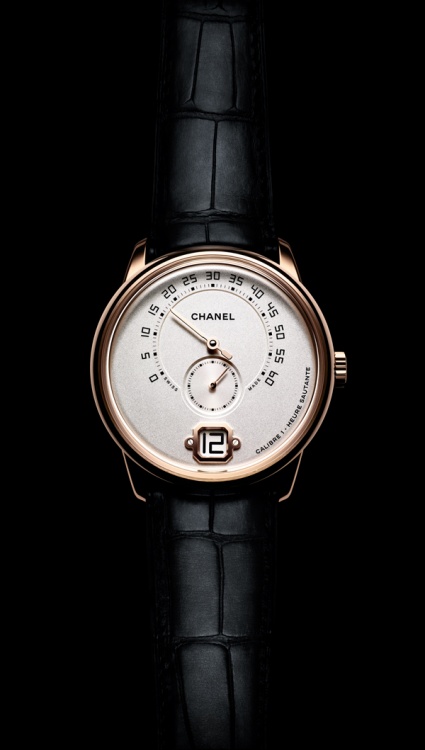
It was the best of times; it was the worst of times – depending on whom you ask. This year’s Baselworld, horology’s biggest annual powwow, featured debuts that accentuated some of the more polarising themes in the industry. The fair largely lacked oomph in the technical department – the exceptions coming from the unlikeliest quarters – but visual and material changes to major lines proved plenty for spectators to deliberate on.
Front and centre of the chatter was a new version of the Rolex Cosmograph Daytona. The latest model houses the same workhorse chronograph movement found in the present range and has an identical dial case design, albeit with a resilient Cerachrom bezel in black against a steel case – fitting for a rugged tool watch. Purists laud the conservative design approach, reminiscent of early iterations from the 1960s and, if that historic resemblance serves as any indication, it suggests the new Daytona has all the makings of an instant classic. Sceptics, on the other hand, wanted more from The Crown’s most recent effort.
That sentiment has to do less with the watch itself than with its lineage. It’s safe to say that any student of horology would consider the Daytona as close to the platonic ideal of a sports chronograph as any watch – a status perhaps shared by only one other storied line, the Omega Speedmaster. And therein lies the paradox: the Daytona is so great an icon that any evolution would necessarily be incremental. How do you make a paragon better, without making it fundamentally different?
Sceptics point to the massive price differentials among vintage Daytonas, due to dial variations, as symptoms of fanaticism gone awry and say the latest issue is subject to more of the same disproportionate hype over what are essentially aesthetic changes. It’s testament to the high expectations about Rolex releases that the major criticism of the new Daytona is that it’s great but not greater.

Omega unveiled the limited-run Speedmaster CK2998, patterned after a reference from 1959. The remake faithfully replicates the original, down to the dial and hands, but with modern touches such as a navy blue finish, ceramic bezel and a top-class, manually wound movement. Like the Daytona, the latest Speedmaster is not substantially a new watch, though its adventurous visual approach freshens up an old favourite and placates devotees before a major update.
Rolex’s other headline-grabber was the reintroduction of the nostalgia-inducing Air-King, now offered in a modern, 40-millimetre diameter. The formerly defunct entry-level watch was beloved for its no-nonsense, versatile and tenacious take on the daily wearer. It embodied the hallmarks that make Rolex a horological powerhouse. The rich history attached to the model range meant that opinions were in ready supply during the release. Apart from the generous size increase – in itself contentious among those that prefer the understated proportions of its predecessors – the new Air-King offers a different dial outlook altogether. While its forebears were known to champion simplicity, the latest rendition has a more crowded aesthetic, bearing a mixture of numeric hour and minute markers. The watch does, on the other hand, feature an anti-magnetic shield, a nifty addition that pays tribute to the Air-King’s utilitarian heritage.
The reintroduction comes at an interesting time for Rolex. While the former Air-King had sole claim to be the brand’s dependable entry point, the new version comes on the heels of the Oyster Perpetual 39 millimetre which, for all intents, purposes and purses, already possesses qualities worthy of an Air-King successor. Add to that, Rolex has updated its Explorer, making it an even more compelling proposition, with improved luminescent markers and hands in better proportion to the dial.
The Explorer and Air-King have co-existed without much overlap, but the points of differentiation are diminishing: the two house similar movements, have comparable hands and quarter markers – though the Explorer’s 3-6-9 positions now have a luminous coating. Both models also display the same expert case finishing, the Air-King being offered in a marginally bigger diameter. Enthusiasts hoping to obtain an entry-level Rolex are spoiled for choice and time will determine the life taken on by the Oyster Perpetual, Air-King and Explorer.

The sister company of Rolex, Tudor, also generated plenty of buzz, releasing new iterations of its popular Heritage Black Bay line which highlight the sort of risk-taking and novelty the brand is now known for. Leading the pack is a bronze version that contains an in-house movement in a 43-millimetre case – twin firsts for the Black Bay. In a crowded segment for diver’s watches, the Black Bay Bronze manages to stand apart, even within its own family. It shows vintage styling typical of the Black Bay line, though the addition of numeric 3-6-9 markers makes it even more reminiscent of old-school tool watches such as the early Rolex Explorer. The case is fashioned from a proprietary bronze alloy that gives off a hue that is different from other bronze watches. The Black Bay Bronze avoids a simple rehashing of history in favour of reinterpreting classical aesthetics with modern amenities.
At the other end of the spectrum is the Black Bay 36 that while lacking in material and technical novelty was novel in its understatement. Visually, the watch might also seem unremarkable, with its conventional luminous markers and black dial; that these come in a 36-millimetre package turns this Black Bay into one of this year’s most surprising releases. In an era of case inflation, when expectations for a sports watch stretch far north of 40 millimetres, the Black Bay 36 is a countercultural offering.
Not to be outdone in the disruption department, Patek Philippe continued its daring streak – last year’s Calatrava Pilot Travel Time remains controversial – with the introduction of the World Time Chronograph. Perhaps best known for superlative manifestations of dress watches and conventional complications such as chronographs and calendars, Patek nevertheless has an archive replete with horological outliers that serve as inspiration for new models.
The new entry combines a world-time indication with a flyback chronograph, which theoretically sounds like an ideal pairing, given how sought-after the two complications are on their own. As each of the two features takes up a bit of real estate, especially with the text-heavy world-time function, the dial inevitably appears busy. Compare, for instance, Patek’s refreshed World Time reference, which bears a host of similarities to the World Time Chronograph, though with greater legibility. The chronograph is no game changer and isn’t expected to fundamentally alter the make’s identity as a standard-bearer for classic horology. It is, however, a refreshing sign that a top watchmaker often associated with tradition isn’t willing to let preconception get in the way of experimentation.
Patek Philippe also announced a new model that packs the same, go-to movement in the brand’s perpetual-calendar offerings, but with some big design choices. Notably, it comes in an enlarged 39-millimetre case – a statement of modernism, given the conservative case sizes among the brand’s previous perpetual calendars. That dose of the contemporary goes hand in hand with a dash of old-school elegance in the form of Breguet-style hour markers, forming a watch that is in equal parts forward-looking and timeless.
While mechanical developments were subdued among the biggest brands, houses more often associated with high jewellery had a trunk load of technical feats to show, demonstrating the vibrancy of the watch market. Chopard is in the middle of a two-decade project to re-establish itself as a horological force and it made quite the statement with two pieces that served as metaphorical bookends to that narrative.

The first of the releases, the L.U.C XPS 1860, pays homage to the brand’s first in-house movement made in 1996 and houses a calibre based on the original. That fundamental blueprint has been key to the brand’s ambitions. It remains the cornerstone of a variety of movements and modular layouts in use today. The second debut, a perpetual-calendar chronograph, expresses how far Chopard has come in that vision. The L.U.C Perpetual Chrono places Chopard on a shortlist of makes that are able to combine two of the most hallowed complications in horology. While the brand may not exude the same gravitas as some of its more storied counterparts, given the past 20 years, that could change soon.
Another high-jewellery house made a serious play for the horological top tier – breaking a record in doing so. Bulgari revealed the Octo Finissimo Minute Repeater, and while a minute-repeater watch is by itself impressive enough, the brand managed to construct the world’s thinnest: the overall height – movement, case and all – is an astonishing 6.85 millimetres. While the Octo Finissimo isn’t exactly an everyday watch meant for wide distribution, the implications of such a technical feat could be far-reaching. What has Bulgari learned from this exercise, and what sort of lessons could it apply to some of its more accessible pieces?

But the most surprising of the debuts came out of nowhere – mostly because it was without precedent. Chanel entered the fray with a complicated in-house movement developed in conjunction with Romain Gauthier, the watchmaker known for technical pieces such as the Logical One, which won a Grand Prix d’Horlogerie de Genève prize in 2013. Chanel’s entry into high horology, the Monsieur de Chanel, boasts the Calibre 1, a jumping-hour, retrograde engine powered by twin barrels yielding three days of reserve. Chanel could have opted for a more conventional movement and architecture but that it chose to shirk tradition hints at the sort of innovation the brand is aiming for. The Monsieur not only conveys that Chanel is venturing into the watch world, it also declares that the maison wants to do things differently. With other players seemingly ready to echo that sentiment, horology may be at the start of a renaissance.






